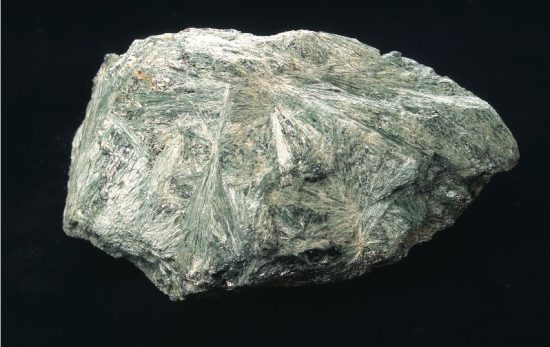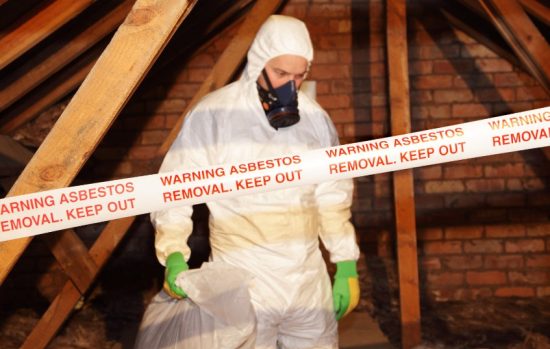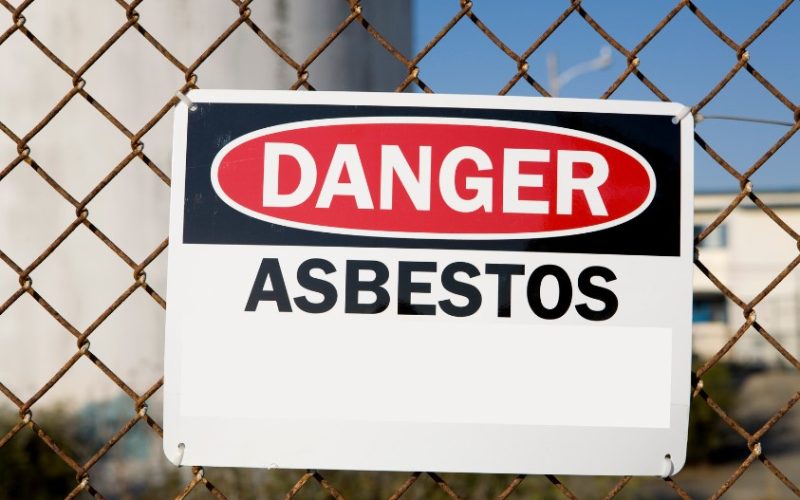Asbestos was once known as a “miracle mineral” for its durability, heat resistance, and insulating properties. However, it has also been linked to serious health issues such as lung cancer and mesothelioma. Canada was one of the world’s largest producers of asbestos until recently when it became clear that the risks outweighed the benefits. In this blog post, we’ll explore the history of asbestos use in Canada, examine when it was banned and why exemptions were made to that ban, and discuss the impact on both industry workers and Canadians at large. Join us for an eye-opening look into one of Canada’s most controversial industries.
What is Asbestos?

Asbestos is a naturally occurring mineral that was once hailed as a miracle product due to its heat-resistant and insulating properties. It can be found in various forms, including chrysotile (white asbestos), amosite (brown asbestos), and crocidolite (blue asbestos). Asbestos fibres are incredibly durable and don’t break down easily, making them difficult to remove from the environment once they have been released.
The use of asbestos dates back thousands of years, but it wasn’t until the Industrial Revolution that it became widely used in construction materials such as insulation, roofing shingles, and flooring tiles. Its popularity continued into the mid-20th century when it was even used in household products like hair dryers and ironing board covers.
Despite its usefulness, however, studies began to emerge linking exposure to asbestos with serious health issues such as lung cancer and mesothelioma. As a result, many countries began phasing out or outright banning the use of asbestos altogether.
Where is Asbestos made in Canada?
Asbestos was once a significant industry in Canada, with the vast majority of asbestos production occurring in Quebec. The town of Asbestos, located approximately 150 kilometres east of Montreal, was home to two major asbestos mines and a processing plant.
The Jeffrey mine opened in 1879 and remained operational for over a century until it closed permanently in 2011. At its peak in the late 1970s, the Jeffrey mine employed over 2,000 workers and produced up to one-fifth of the global demand for chrysotile asbestos.
Another major mine near Asbestos was the Lac d’Amiante du Canada (LAC) operation which began producing asbestos ore in the early 1950s. The LAC mine produced mostly amosite asbestos until it closed down operations around the same time as Jeffrey Mine’s permanent closure.
However, other parts of Canada also had active or abandoned mines that produced different types of asbestos such as tremolite and anthophyllite but their production volume was lower compared to Quebec.
While Canada no longer produces any form on a commercial scale since all Canadian mining operations have gone out of business due largely to health concerns surrounding exposure to deadly fibres from these minerals; there are still many older structures across the country containing construction materials made from this harmful mineral posing a huge environmental risk.
The History of Asbestos in Canada
Asbestos has been a part of Canada’s history for over a century. The town of Asbestos in Quebec was named after its abundant asbestos deposits. The mineral was widely used in construction and manufacturing due to its heat-resistant properties. As demand grew, so did production, and by the 1970s, Canada had become one of the world’s largest exporters.
However, studies began to show that asbestos exposure could lead to serious health problems such as lung cancer and mesothelioma. Despite this knowledge, companies continued to use asbestos without proper safety measures or warnings.
It wasn’t until the 1980s that regulatory action started being taken against asbestos use in Canada. This led to stricter regulations on handling and disposal but did not result in an outright ban.
Throughout the 1990s and early 2000s, more research showed just how dangerous asbestos truly is. Activists pushed for a complete ban on all forms of asbestos use in Canada – both exports and domestic production.
On December 30th, 2018 – after years of lobbying from activists – the Canadian government announced a comprehensive ban on all forms of asbestos. While it may have taken decades to get here, it is finally clear that public health must come before profit when it comes to this deadly mineral.
When Was Asbestos Banned in Canada?

Asbestos, a naturally occurring mineral that was once widely used in construction materials due to its heat resistance and durability, has been linked to serious health risks such as lung cancer and mesothelioma. The use of asbestos in Canada dates back to the early 1900s when it was mined in Quebec and exported worldwide.
The history of asbestos use in Canada is marred by controversy as companies continued to mine and manufacture products containing asbestos despite mounting evidence regarding its harmful effects on human health. It wasn’t until the late 1970s that safety regulations began to be implemented, including restrictions on the importation of raw asbestos.
After years of advocacy efforts from activists, trade unions and public health officials, Canada announced a comprehensive ban on all forms of asbestos effective December 30th, 2018. This includes both importing and exporting any products containing asbestos.
Despite this long-awaited ban being put into place, there are still concerns about existing buildings that contain harmful levels of asbestos. The government has responded with new regulations aimed at protecting workers during renovations or demolitions that may disturb these hazardous materials.
The Government Response to Asbestos Use
Asbestos was widely used in Canada for decades, and the government had a significant role to play in regulating its use. Despite growing concerns about the health risks of asbestos exposure, it took several years before any meaningful action was taken.
In 1979, Health Canada recommended stricter regulations on asbestos use but faced opposition from industry groups. It wasn’t until 1986 that new regulations were put in place, requiring warning labels on all products containing asbestos.
However, it wasn’t until much later that the Canadian government took more decisive action. In 2018, legislation was passed banning the import and sale of most asbestos-containing products in Canada.
While this ban is an important step forward for public health protection, some critics argue that it doesn’t go far enough. The ban contains exemptions for certain uses of asbestos in industries such as mining and essential construction materials.
While there has been progress made by the Canadian government toward controlling the use of asbestos over time, many continue to argue that more needs to be done to protect workers and communities from exposure.
The Impact of the Ban on Asbestos
The ban on asbestos in Canada has had significant impacts on industries, workers, and individuals. While the ban was put in place to protect people from health risks associated with asbestos exposure, it also resulted in economic challenges for communities that were reliant on the industry.
- One impact of the ban is that it led to a decrease in demand for asbestos-related products. This meant that companies producing these products had to find alternative materials or shut down their operations altogether. However, there was also an opportunity for companies involved in the removal and remediation of asbestos-containing materials as they could offer their services to those who needed assistance with removing these dangerous substances from buildings and structures.
- Another impact of the ban was improved worker safety. Workers who were previously exposed to high levels of asbestos fibres are now better protected due to stricter regulations enforced by government agencies. The reduction of illnesses related to asbestos exposure has been seen since its implementation.
Furthermore, homeowners and property owners have become more aware of the dangers associated with asbestos-containing materials which can help prevent future exposures by taking proper precautions during renovations or demolitions where such material might exist.
Exemptions on the Ban of Asbestos

After the Canadian government announced the ban on asbestos in 2018, many people were relieved that this known carcinogen would no longer be used in products manufactured within the country.
However, there are some exceptions to this ban:
- One notable exemption is for asbestos-containing materials (ACMs) already installed or present in buildings before the announcement of the ban. This means that while new construction cannot use asbestos, older structures can still contain it and may not need to be removed.
- Another exemption involves certain types of critical infrastructure such as military equipment and nuclear facilities. These industries have been given a transitional period until 2023 to find replacements for asbestos-containing parts and products.
- Some critics argue that these exemptions leave Canadians vulnerable to continued exposure to asbestos. It remains important for individuals working with or around ACMs to take necessary precautions such as proper personal protective equipment and adherence to safety regulations.
While the ban on asbestos in Canada is a step forward toward protecting public health, it’s clear that there is still work needed to eliminate its presence in our environment.
Conclusion
The Canadian Government’s decision to ban all forms of asbestos was a long time in the making, yet it was the right one. Lives have been saved by preventing people from potentially being exposed to this hazardous substance, and while exemptions still exist, caution must be taken when interacting with any material that may contain asbestos. Both individuals and businesses must take the necessary steps to identify and handle such materials in a secure manner. By recognizing how far we’ve come in combatting asbestos, we can look forward to enjoying a healthier future for our country.
FAQs on when was asbestos banned in Canada
1. What town was closed due to asbestos?
The settlement of Wittenoom, destroyed by asbestos mining, will vanish off the face of the planet. However, the government first had to expel those who wished to remain. Due to decades of asbestos mining, Wittenoom, Australia, which was once a sign of economic progress, is now a deserted ghost town.
2. How serious is one time asbestos exposure?
Except in extreme cases where poisonous dust fills the air, one-time asbestos exposure often poses no serious risk. Usually, months or years of regular workplace exposure to asbestos induce diseases.
3. Can asbestos still be used?
Yes. Even today, asbestos is being used. It still plays a significant role in many items because of its distinctive physical characteristics.
4. What is the main type of asbestos used in Canada?
There are numerous subtypes of amphibole asbestos, such as actinolite, amosite, anthophyllite, crocidolite, and tremolite. White asbestos or chrysotile asbestos are other names for serpentine asbestos. It also results in cancer. The type of asbestos that is currently most frequently utilized worldwide is chrysotile asbestos.










